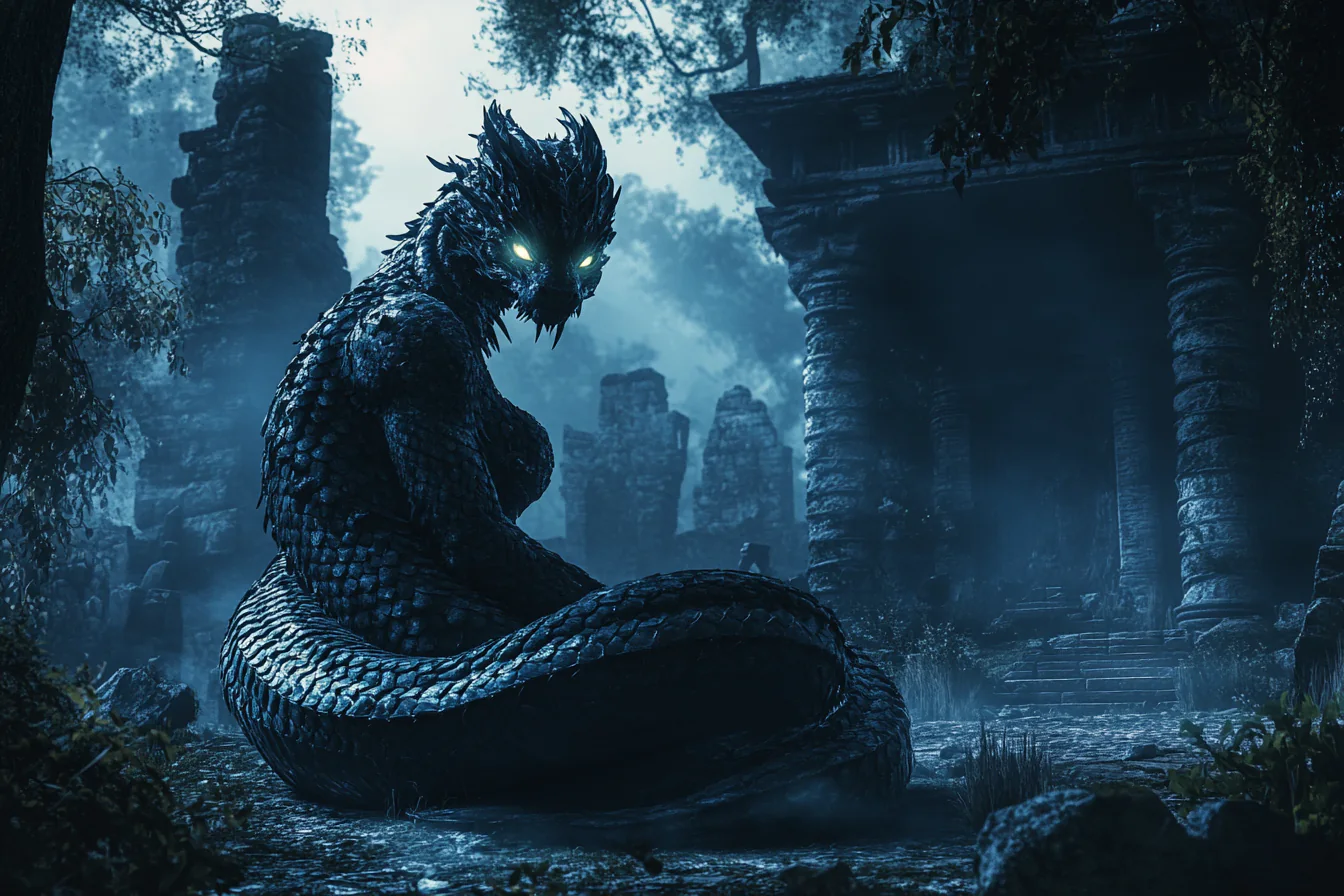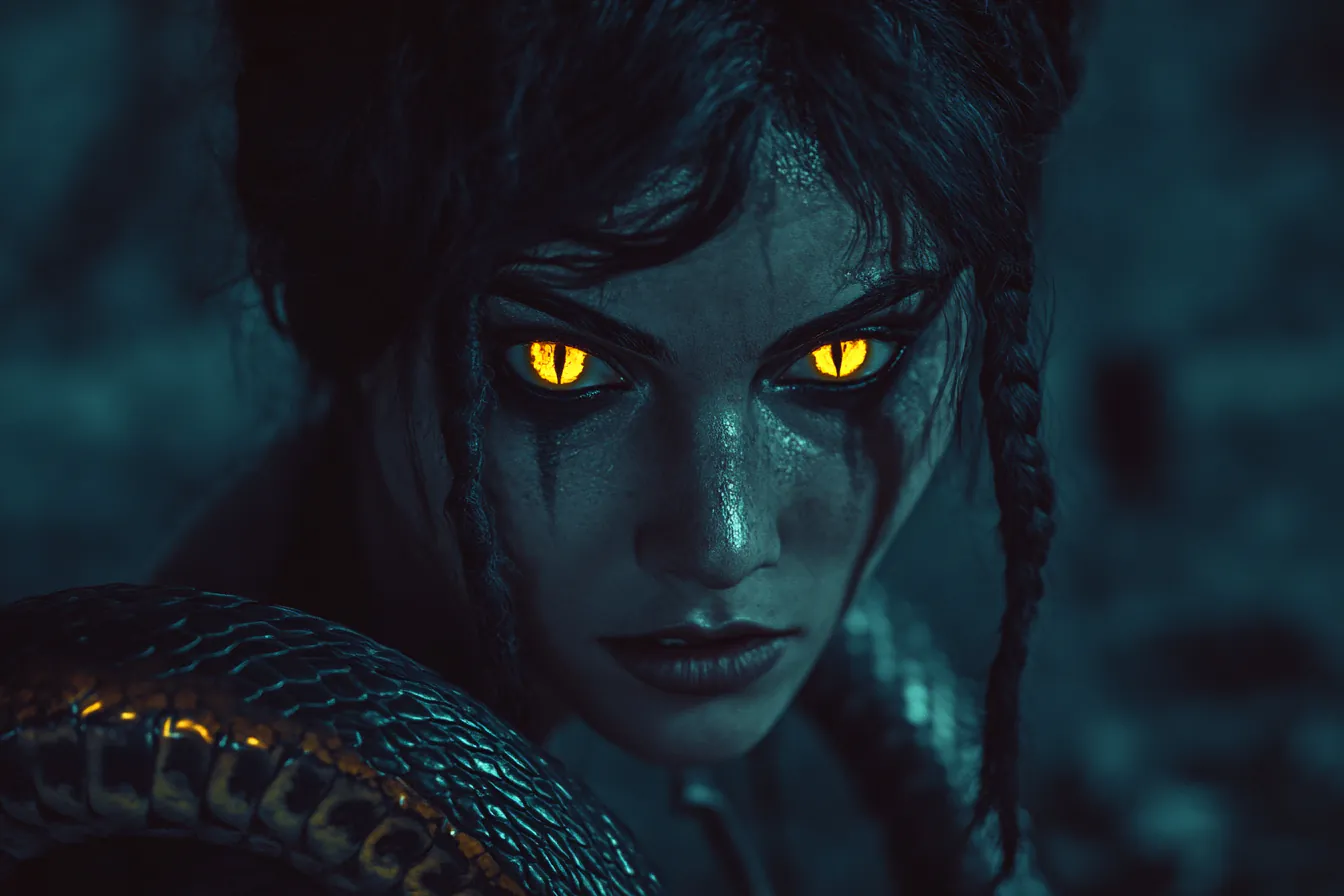What Is Lamia?
Lamia is a well-known mythical creature in Greek mythology, often portrayed as a female monster who kidnaps and devours children. Originally, Lamia was a beautiful queen of Libya who was loved by Zeus. However, after being punished by Hera—Zeus’s wife—who killed Lamia’s children, she went mad with grief and transformed into a terrifying creature who hunted children to seek revenge.
Lamia’s Appearance and Characteristics
Lamia is often depicted as a half-woman, half-serpent being, with the upper body of a woman and the lower body of a snake. Some myths describe her as having the ability to remove her eyes and store them in a box, allowing her to rest from the constant pain of losing her children. Additionally, Lamia had the power to shape-shift, often turning into a beautiful woman to seduce men before killing them.

Distinct Traits of Lamia:
- Half-serpent form: A snake-like lower body combined with a human female upper body.
- Removable eyes: She could remove her eyes to ease her suffering.
- Shape-shifting: Lamia could disguise herself as a beautiful woman.
- Seductive yet deadly: She used her beauty to lure and destroy.
Origins and Symbolic Meaning of Lamia
Lamia’s story originates from her tragic romance with Zeus. After Hera discovered their affair, she killed Lamia’s children, driving her into madness. Out of pity, Zeus gave Lamia the power of prophecy and the ability to remove her eyes, helping her find relief from her sorrow.
Lamia became a symbol of deep suffering, loss, and vengeance. She also represents humanity’s fear of the supernatural and the uncontrollable forces that exist beyond reason.
Symbolic Themes:
- Sorrow and grief: A mother’s pain turned into rage.
- Revenge: Her transformation represents revenge born from loss.
- Fear of the unknown: Lamia embodies dread toward the mysterious and magical.
Lamia’s Abilities and Powers
Though driven by sorrow, Lamia was a powerful and dangerous creature with supernatural abilities:
- Shape-shifting: She could transform into a stunning woman to lure victims.
- Prophecy: Gifted by Zeus, she could see into the future.
- Removable eyes: Used as a way to momentarily escape her pain.
- Supernatural strength: She could easily abduct and kill children.
Famous Myths and Stories About Lamia
In Greek mythology, Lamia was often used as a figure to scare misbehaving children. She also appeared in ancient literature and art as a symbol of punishment and suffering.
One of the most famous literary references is the poem Lamia by John Keats, where she is portrayed as a beautiful but tragic and dangerous creature.
Lamia in Modern Culture
Lamia continues to inspire modern popular culture across various media:
- Literature: Featured in Lamia by John Keats, where she is seductive yet deadly.
- Film: The main antagonist in Drag Me to Hell (2009) is named Lamia—a horrifying demon figure.
- Video Games: Appears in games like Final Fantasy and God of War as a dangerous enemy creature.
Similar and Opposing Mythical Creatures
- Similar to: Lilith from Jewish mythology—both are female entities known for harming children.
- Opposite of: Angels in Christian belief—who represent light, protection, and hope, contrasting with Lamia’s dark and vengeful nature.
Lamia in Feng Shui and Western Symbolism
Lamia does not play a role in traditional Eastern feng shui, but from a Western symbolic perspective, she may be interpreted as:
- A warning of danger: A reminder to be cautious of hidden threats.
- A symbol of revenge: Embodying the destructive power of unresolved grief.
However, using Lamia as a decorative or spiritual symbol should be done with care, as her image carries intense and heavy emotional energy.
Conclusion
Lamia is a tragic figure in Greek mythology, representing grief, loss, and revenge. Once a beautiful queen, she became a terrifying monster—a transformation driven by the pain of losing her children. Her story serves as a reminder of the destructive consequences of jealousy and unhealed sorrow.
Today, Lamia remains a powerful symbol in modern culture, appearing in literature, film, and games as an icon of danger, fear, and tragic beauty.
